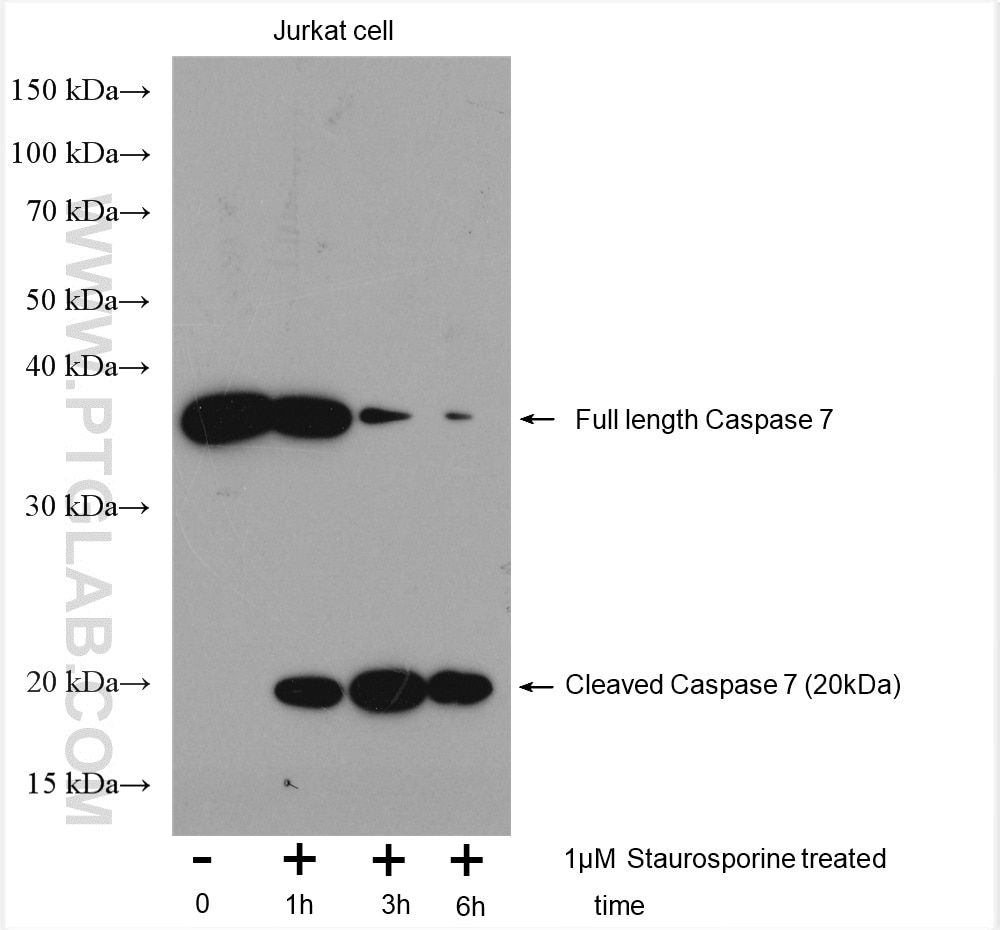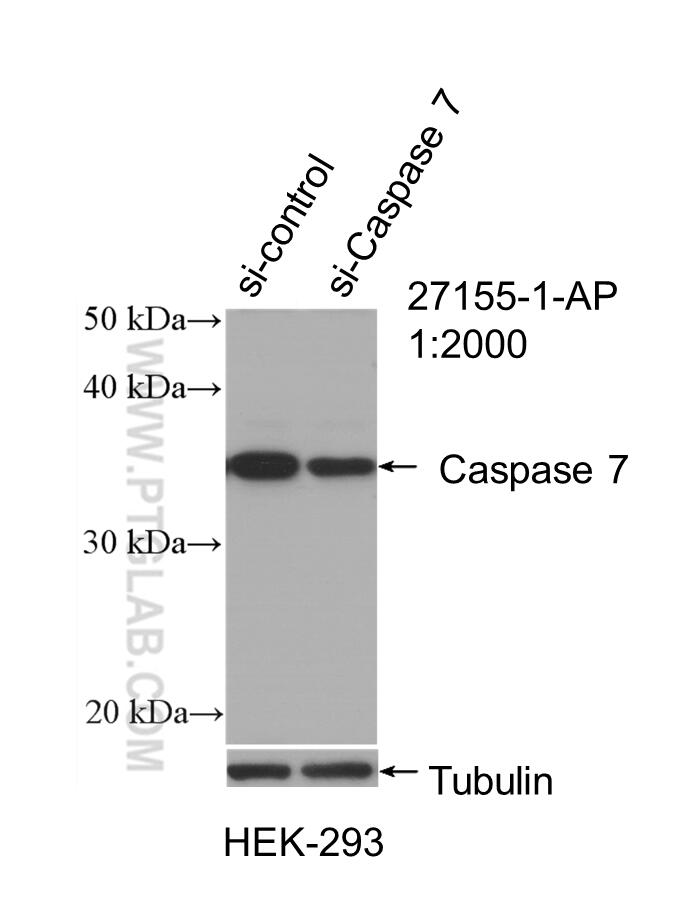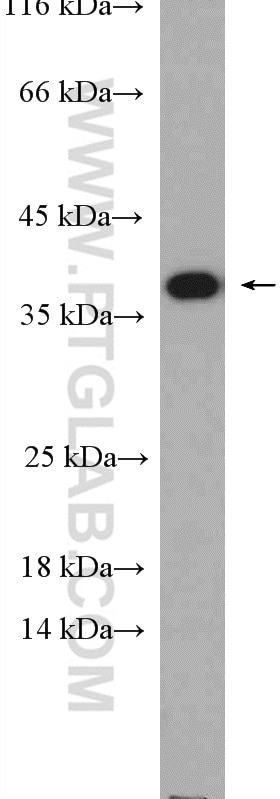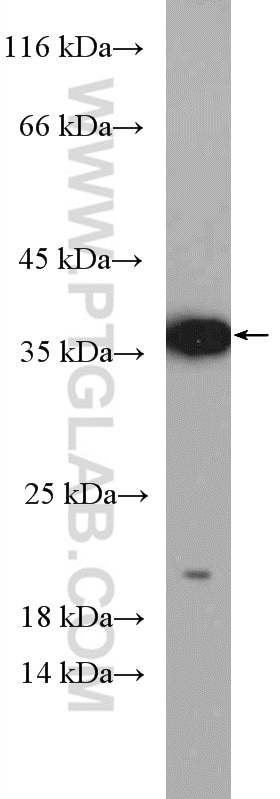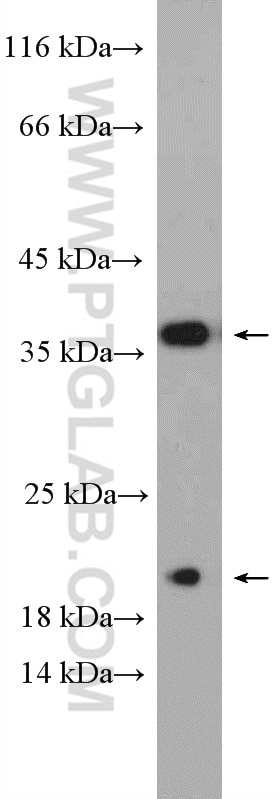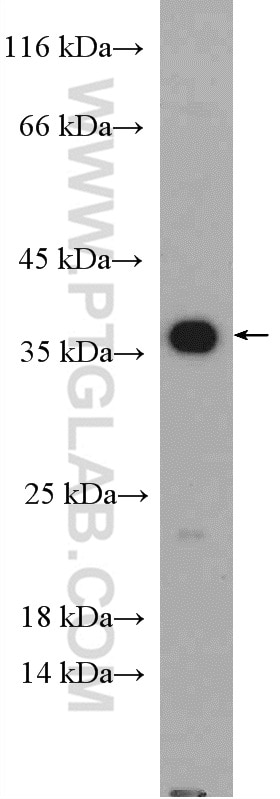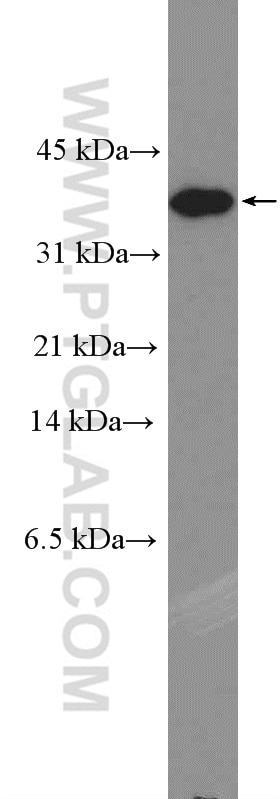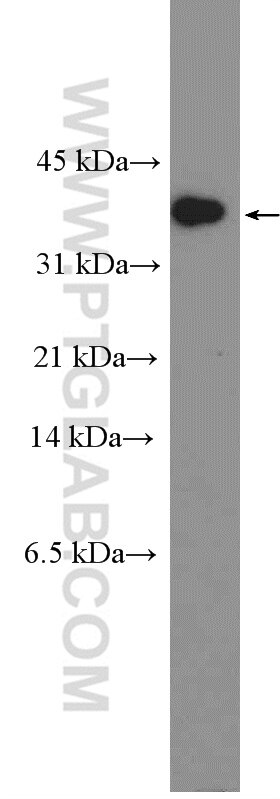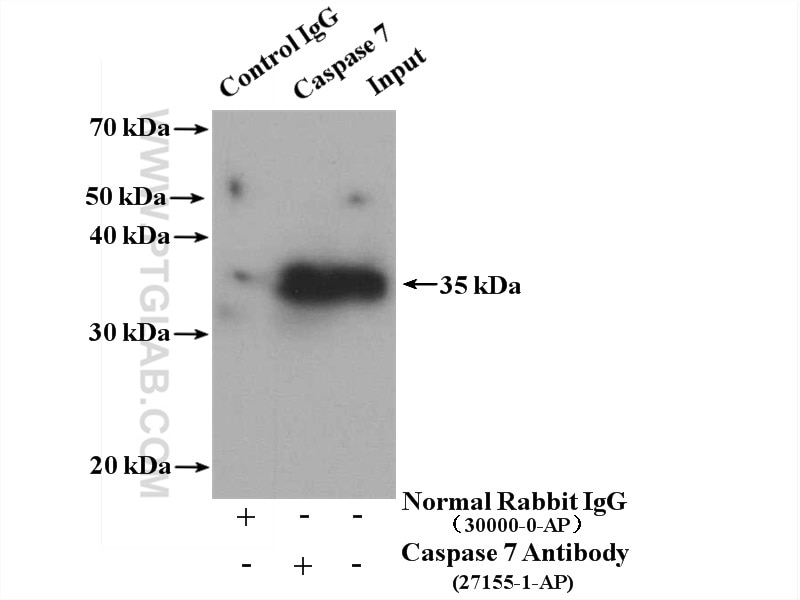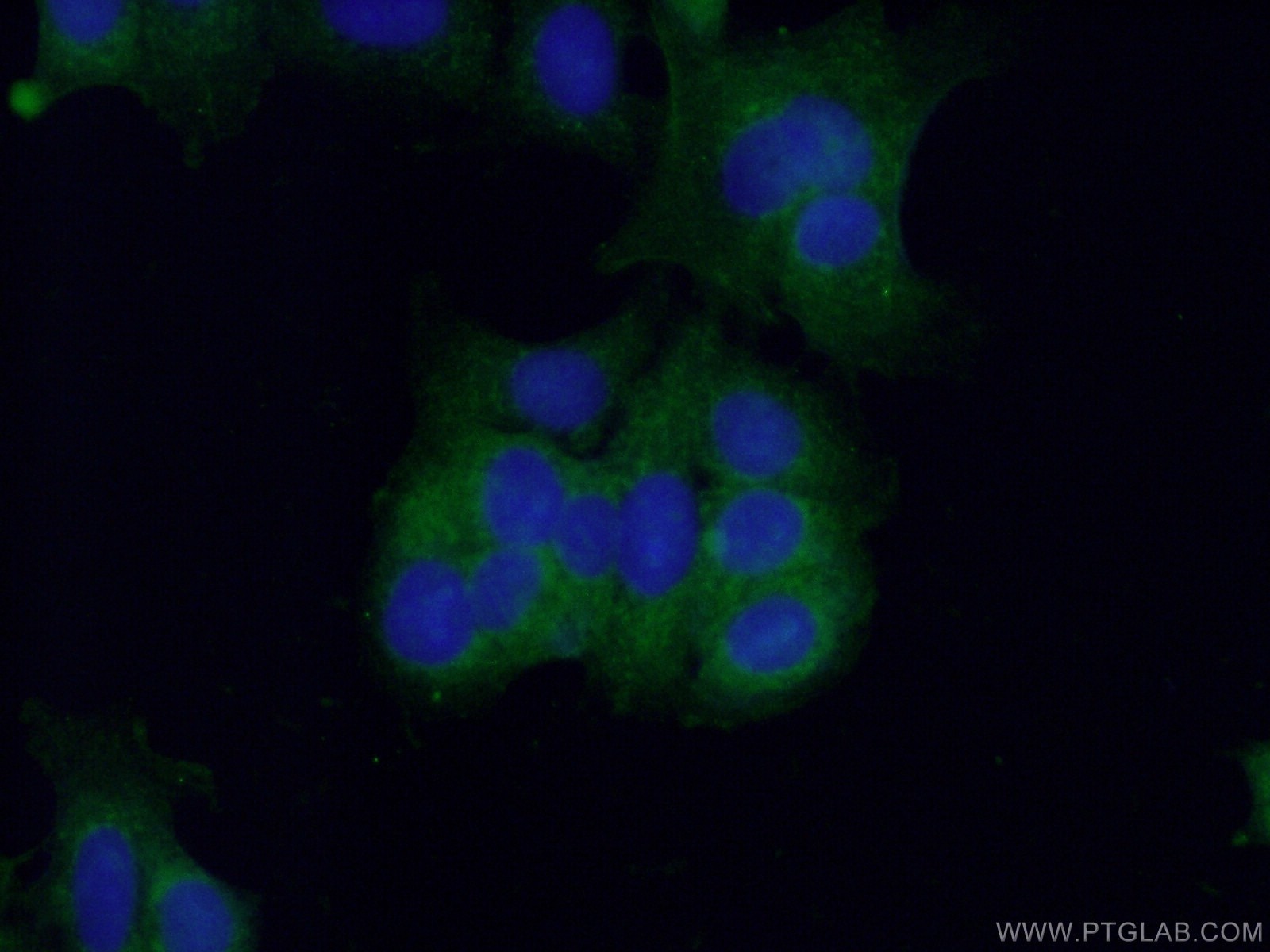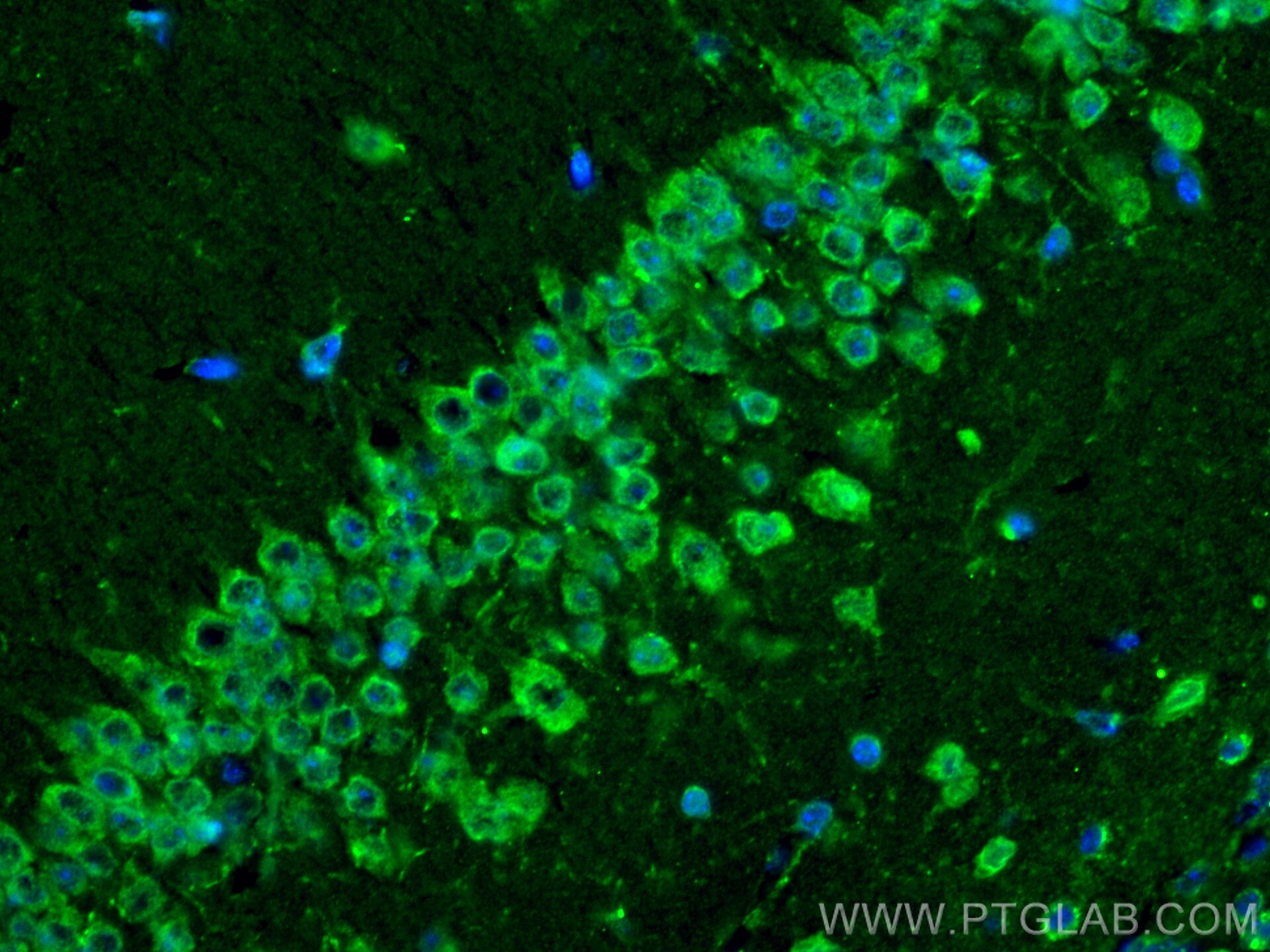- Phare
- Validé par KD/KO
Anticorps Polyclonal de lapin anti-Caspase 7/p20
Caspase 7/p20 Polyclonal Antibody for IF, IP, WB, ELISA
Hôte / Isotype
Lapin / IgG
Réactivité testée
Humain, souris et plus (1)
Applications
WB, IP, IHC, IF, ELISA
Conjugaison
Non conjugué
N° de cat : 27155-1-AP
Synonymes
Galerie de données de validation
Applications testées
| Résultats positifs en WB | cellules Jurkat, cellules HEK-293, cellules LNCaP, cellules MCF-7, cellules PC-3, tissu hépatique de souris |
| Résultats positifs en IP | cellules HEK-293, |
| Résultats positifs en IF | cellules MCF-7, tissu cérébral de souris |
Dilution recommandée
| Application | Dilution |
|---|---|
| Western Blot (WB) | WB : 1:500-1:1000 |
| Immunoprécipitation (IP) | IP : 0.5-4.0 ug for 1.0-3.0 mg of total protein lysate |
| Immunofluorescence (IF) | IF : 1:50-1:500 |
| It is recommended that this reagent should be titrated in each testing system to obtain optimal results. | |
| Sample-dependent, check data in validation data gallery | |
Applications publiées
| KD/KO | See 2 publications below |
| WB | See 47 publications below |
| IHC | See 2 publications below |
| IP | See 1 publications below |
Informations sur le produit
27155-1-AP cible Caspase 7/p20 dans les applications de WB, IP, IHC, IF, ELISA et montre une réactivité avec des échantillons Humain, souris
| Réactivité | Humain, souris |
| Réactivité citée | rat, Humain, souris |
| Hôte / Isotype | Lapin / IgG |
| Clonalité | Polyclonal |
| Type | Anticorps |
| Immunogène | Caspase 7/p20 Protéine recombinante Ag25904 |
| Nom complet | caspase 7, apoptosis-related cysteine peptidase |
| Masse moléculaire calculée | 303 aa, 34 kDa |
| Poids moléculaire observé | 35 kDa |
| Numéro d’acquisition GenBank | BC015799 |
| Symbole du gène | CASP7 |
| Identification du gène (NCBI) | 840 |
| Conjugaison | Non conjugué |
| Forme | Liquide |
| Méthode de purification | Purification par affinité contre l'antigène |
| Tampon de stockage | PBS avec azoture de sodium à 0,02 % et glycérol à 50 % pH 7,3 |
| Conditions de stockage | Stocker à -20°C. Stable pendant un an après l'expédition. L'aliquotage n'est pas nécessaire pour le stockage à -20oC Les 20ul contiennent 0,1% de BSA. |
Informations générales
Caspase 7(CASP7), like caspases 3 and 6, contains a short prodomain and, upon apoptotic induction, the 35 kDa proform is converted into a 32 kDa intermediate or preactive form which is further processed into two active subunits consisting of the p20 or large (18 kDa) subunit and the p10 or small (11 kDa) subunit and it is present in the brain, which is up-regulated and activated after traumatic injury(PMID:15953353). Caspase-7 is classified as a member of the subgroup of cysteine proteases most related to the Caenorhabditis elegans factor CED-3, which also includes caspase-3, -6, and -9(PMID:9426061). The protein is involved in the activation cascade of caspases responsible for apoptosis execution.
Protocole
| Product Specific Protocols | |
|---|---|
| WB protocol for Caspase 7/p20 antibody 27155-1-AP | Download protocol |
| IF protocol for Caspase 7/p20 antibody 27155-1-AP | Download protocol |
| IP protocol for Caspase 7/p20 antibody 27155-1-AP | Download protocol |
| Standard Protocols | |
|---|---|
| Click here to view our Standard Protocols |
Publications
| Species | Application | Title |
|---|---|---|
Nat Commun Macrophage lineage cells-derived migrasomes activate complement-dependent blood-brain barrier damage in cerebral amyloid angiopathy mouse model | ||
J Pineal Res Melatonin synergizes the chemotherapeutic effect of 5-fluorouracil in colon cancer by suppressing PI3K/AKT and NF-κB/iNOS signaling pathways. | ||
Front Immunol Identification of molecular subtypes based on PANoptosis-related genes and construction of a signature for predicting the prognosis and response to immunotherapy response in hepatocellular carcinoma | ||
Phytother Res Targeting HSP90 with picropodophyllin suppresses gastric cancer tumorigenesis by disrupting the association of HSP90 and AKT | ||
J Agric Food Chem β-Sitosterol-D-glucoside from sweet potato exerts an anti-breast cancer activity by upregulating microRNA-10a and PI3K/Akt signaling pathway. |
